Olympus M.Zuiko Digital 12-40 mm f/2.8 ED PRO
8. Vignetting
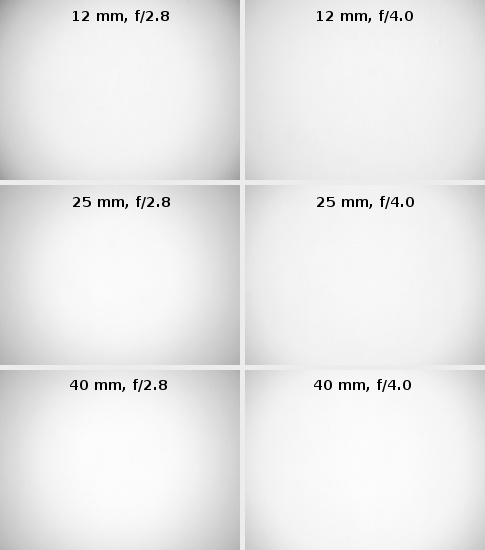
The vignetting level is the highest at 12 mm focal length and with the lens wide open with the brightness loss amounting to 37% (-1.35 EV). It is a high value but still definitely lower than 49% shown by the Panasonic 12-35 mm f/2.8. On stopping down to f/4.0 you see the vignetting level decreasing to 20% (-0.65 EV) By f/5.6 and higher the vignetting is near 15% (-0.47 EV).
Please Support UsIf you enjoy our reviews and articles, and you want us to continue our work please, support our website by donating through PayPal. The funds are going to be used for paying our editorial team, renting servers, and equipping our testing studio; only that way we will be able to continue providing you interesting content for free. |
- - - - - - - - - - - - - - - - - - - - - - - - - - - - - - - - - - - - - - - - - - - - - - - -
In the middle of the focal range the light fall-off in the frame corners at the maximum relative aperture gets to 29% (-0.99 EV). That aberration decreases to 22% (-0.71 EV) when you stop down to f/4.0 and it drops further to 15% (-0.46 EV) by f/5.6. By f/8.0 the vignetting is just 11% (-0.35 EV) and it doesn’t change with the further stopping down of the aperture.
A very similar performance you can observe at the maximum focal length. By f/2.8 the brightness loss in the frame corners amounts to 30% (-1.02 EV) and it decreased to 22% (-0.70 EV) by f/4.0. For f/5.6 and f/8.0 apertures the vignetting is respectively 15% (-0.46 EV) and 9% (-0.29).
It’s worth noticing one more thing. At the widest angle of view the lens has very pronounced barrel distortion. It is corrected by cropping the image so the field of view corresponds with the declared value. However, it also means that the real focal length of the lens is smaller than 12 mm at its widest end and the registered image has a wider angle of view than stated in the specifications. Of course you can use that wider angle of view providing that you develop your RAW files using independent software. It comes with a price because a larger field of view means also higher vignetting. The photo below shows it very clearly: at the wide angle of view and the maximum relative aperture the vignetting reaches 53% (-2.21 EV). It is a huge value, although still not as monstrous as that of the Panasonic 12-35 mm where it amounted to as much as 70%, imagine that!
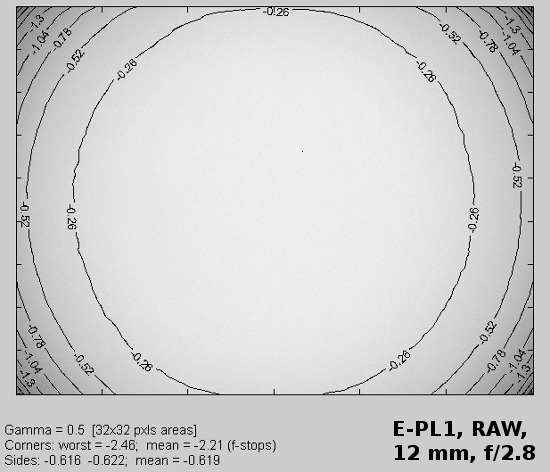 |
At other focal lengths the difference between RAW files vignetting and JPEG files vignetting is just 2-3%. With narrower angles of view the distortion level is significantly lower and the cropping of images – of marginal significance.
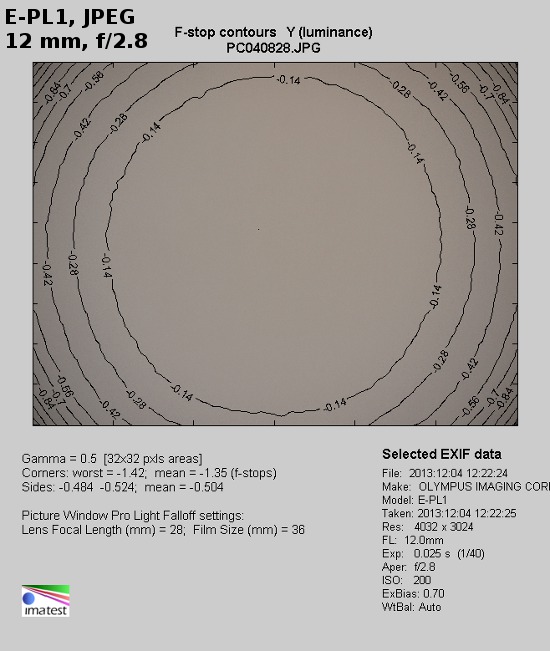 |
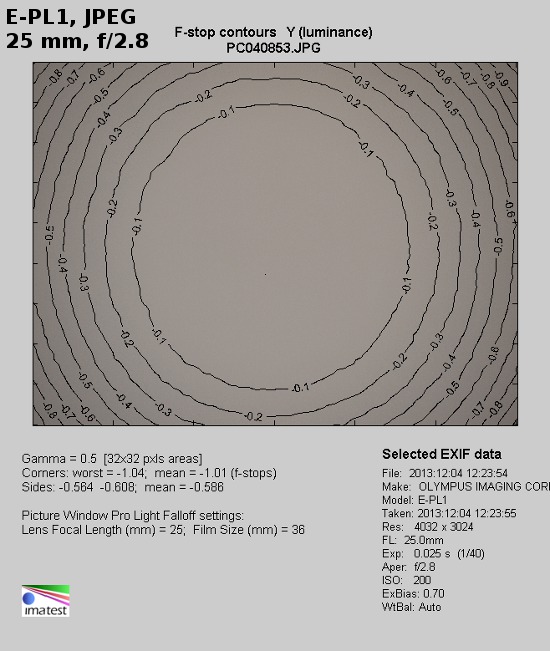 |
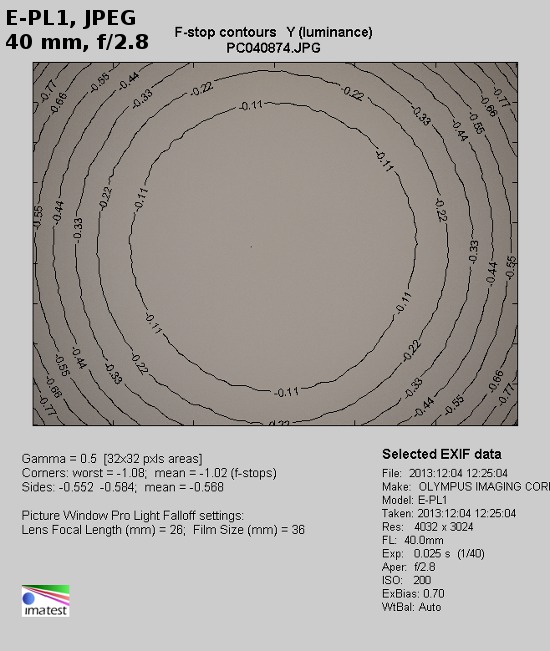 |






